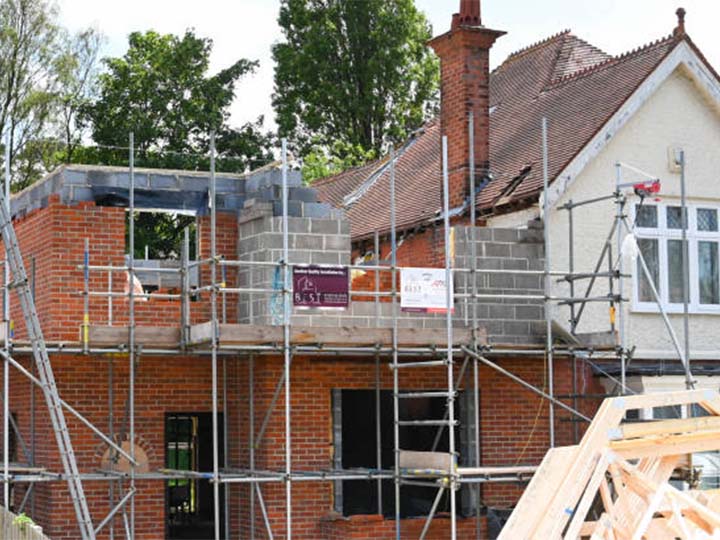
Essential Steps to Plan Your Home Extension
Planning a home extension can transform your living space, accommodating your evolving needs while increasing the value of your property.
This comprehensive guide is crafted to navigate you through the essential steps of planning a home extension, from the inception of your idea to the completion of your dream space.
With a focus on crucial aspects such as building regulations and project management, this guide aims to equip you with the knowledge and confidence to kickstart your home extension project.
Understanding Your Needs and Setting a Vision
The first step in planning a home extension is to assess your current living situation and pinpoint exactly what you need from the additional space.
Whether it’s creating a larger, more functional kitchen, adding an extra bedroom for a growing family, or crafting a dedicated workspace, understanding your requirements is crucial.
This clarity will influence your design and ensure that your project aligns with your lifestyle and enhances your daily living.
Research and Inspiration
Delve into research and gather inspiration. Utilise platforms like Pinterest, Instagram, and home renovation websites to explore the endless possibilities. This phase is about dreaming big and visualising what your space could become.
Take note of design elements that resonate with your style and functionality needs. This visual inspiration will be invaluable when communicating your vision to architects and contractors.
Budget Planning
An early and realistic budget plan is pivotal. Beyond the obvious costs of materials and labour, factor in expenses such as planning permissions, professional fees, and a contingency fund for unforeseen costs.
This preliminary financial planning will guide your decisions, ensuring the project remains financially viable and reducing the risk of stressful overspending.
Navigating Legal Requirements and Building Regulations
A crucial aspect of planning your home extension is understanding and adhering to local building regulations and planning permissions.
These regulations ensure that construction is safe, efficient, and in harmony with community standards. They cover many considerations, including structural integrity, energy efficiency, insulation, and fire safety.
Professional Consultation
Engaging with professionals who specialise in navigating the complexities of building regulations is advisable. Architects and planning consultants can provide invaluable advice, ensuring your project is both compliant and optimised for your needs.
They can assist in submitting necessary applications and liaise with local authorities on your behalf, simplifying what can often be daunting.
Effective Project Planning and Execution
With a solid foundation of research, a clear vision, and an understanding of regulatory requirements, the next phase focuses on bringing your home extension to life.
This involves selecting the right team, managing the project efficiently, and preparing for construction challenges.
Selecting Your Team
The success of your home extension heavily relies on the quality and reliability of the team you choose. Selecting the right professionals is paramount, from architects and builders to specialist contractors.
Seek recommendations, read reviews, and conduct interviews to ensure they have the experience and expertise your project requires. Requesting detailed quotes and checking past work can also help make an informed decision.
Project Management
Effective project management is the backbone of a successful home extension.
Whether you manage the project yourself or hire a professional, clear communication, regular updates, and close oversight are essential. Establishing a realistic timeline, scheduling regular check-ins, and being decisive will keep the project moving forward and mitigate the risk of delays.
Contingency Planning
No construction project is without its surprises. Delays, unexpected structural issues, or material availability changes can impact the timeline and budget. Planning for contingencies by allocating additional funds (typically 10-20% of your total budget) can provide a safety net, ensuring that such surprises don’t derail your project.
Wrapping Up
Planning a home extension is a significant undertaking that, when done correctly, can bring immense satisfaction and value.
Embarking on a home extension is about increasing square footage and creating spaces that reflect your needs, aspirations, and personality. With careful planning, a clear vision, and the right team, your project can be a rewarding journey that transforms your home into the space you’ve always dreamed of.
Ready to take the first step towards your dream home extension?
Emburys Carpentry offers expert guidance and quality craftsmanship to bring your vision to life. Contact us today for a seamless and stress-free home extension service.
Frequently Asked Question
The first step is to assess your current space and needs, setting a clear vision for what you want to achieve with the extension. This clarity will guide your design and planning process.
Consult with an architect or planning consultant familiar with local building regulations. They can help you design a compliant extension and navigate the approval process.
Yes, if you have the time and experience. Effective project management involves coordinating with contractors, managing budgets, and ensuring the project adheres to plans and timelines.
Budgets vary widely depending on the size and complexity of the project. Start with a preliminary budget, considering all potential costs, and include a contingency buffer for unexpected expenses.
Common pitfalls include underestimating costs, failing to comply with building regulations, poor contractor selection, and inadequate project management, leading to delays and quality issues.

